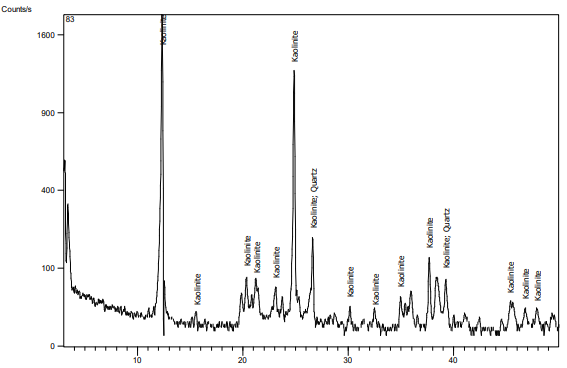
Submission to VIJ 2024-04-12
Keywords
- Insulation – Refractories – PET
Copyright (c) 2024 Ali.M.Hassan

This work is licensed under a Creative Commons Attribution 4.0 International License.
Abstract
In order to improve the thermal insulation properties of fired clay bricks, the addition of polystyrene has been a common practice. However, in this study, we propose an alternative approach by substituting polystyrene with recycled polyethylene terephthalate (PET) derived from drinking water bottles. The PET is shredded and added to the brick composition, with a maximum inclusion level of 25%. Various tests were conducted to evaluate water absorption, apparent porosity, bulk density, cold crushing strength, and thermal conductivity of the bricks at temperatures up to 800 degrees Celsius. The results indicate that incorporating 20% crushed plastic by weight yields bricks comparable to ASTM C155-97 standard bricks.
References
- Zheng, M., et al. Computational biotransformation of polyethylene terephthalate by depolymerase: A QM/MM approach. Journal of Hazardous Materials 423, 127017 (2022).
- Das, S.K., et al. Plastic Recycling of Polyethylene Terephthalate (PET) and Polyhydroxybutyrate (PHB)—a Comprehensive Review. Materials Circular Economy 3, 1-22 (2021).
- Chen, S., et al. Crystallization and Thermal Behaviors of Poly (ethylene terephthalate)/Bisphenols Complexes through Melt Post-Polycondensation. Polymers 12, 3053 (2020).
- A. Parasnis, V. Barthwal, M. Asodekar, P. Chavan, and P. Joshi,“Introduction to Plastic Pollution,” 2020, https://www.teriin.org/sites/default/files/files/Annexure_B6_%20Braille-Booklet-on-Pla stic-Pollution.pdf.
- S. S. Chauhan, J. K. Singh, H. Singh, S. Mavi, V. Singh, and M. I. Khan, “An overview on recycling plastic wastes in bricks,” Materials Today Proceedings, vol. 47, pp. 4067–4073, 2021.
- N. J. Beaumont, M. Aanesen, M. C. Austen et al., “Global ecological, social, and economic impacts of marine plastic,” Marine Pollution Bulletin, vol. 142, pp. 189–195, 2019.
- S. Rhein and M. Schmid, “Consumers’ awareness of plastic packaging: More than just environmental concerns,” Resources, Conservation and Recycling, vol. 162, Article ID 105063, 2020.
- R. Kumar, M. Kumar, I. Kumar, and D. Srivastava, “A Review on Utilization of Plastic Waste Materials in Bricks Manufacturing Process,” Materials Today: Proceedings, vol. 46, pp. 6775–6780, 2021.
- K. Latham, “,e World’s First ’infinite’ Plastic,” 2021,n
- https://www.bbc.com/future/article/20210510-how-to-recycle-any-plastic.
- S. S. S. Salahuddin and S. S. Zambani, “Utilisation of waste hdpe plastic in manufacturing plastic sand bricks,” International Research Journal of Engineering and Technology, vol. 70, 2020.
- H. Ritchie and M. Roser, “Plastic Pollution,” 2018, https://ourworldindata.org/plastic-pollution.
- E. Schmaltz, E. C. Melvin, Z. Diana et al., “Plastic Pollution Solutions: Emerging Technologies to Prevent and Collect marine Plastic Pollution,” Nicholas Institute, vol. 144, Article ID 106067, 2020.
- E. Schmaltz, E. C. Melvin, Z. Diana et al., “Plastic Pollution Solutions: Emerging Technologies to Prevent and Collect marine Plastic Pollution,” Nicholas Institute, vol. 144, Article ID 106067, 2020.
- United Nations. The state of plastics: World Environment Day Outlook 2018. In UN Environment Programme; ONU: New York, NY, USA, 2018; p. 11.
- Spósito, F.A.; Higuti, R.T.; Tashima, M.M.; Akasaki, J.L.; Melges, J.L.P.; Assunção, C.C.; Bortoletto, M.; Silva, R.G.; Fioriti, C.F. Incorporation of PET wastes in rendering mortars based on Portland cement/hydrated lime. J. Build. Eng. 2020, 32, 101506. [CrossRef]
- World Wide Fund for Nature (WWF). Solving Plastic Pollution through Accountability; WWFWord: New York, NY, USA, 2019; p. 23.
- De Castro, A.M.; Carniel, A.; Stahelin, D.; Junior, L.S.C.; Honorato, H.D.A.; de Menezes, S.M.C. High-fold improvement of assorted post-consumer poly(ethylene terephthalate) (PET) packages hydrolysis using Humicola insolens cutinase as a single biocatalyst. Process. Biochem. 2019, 81, 85–91. [CrossRef]
- Chen, X.; Li, C.; Shao, W. Isothermal crystallization kinetics and melting behaviour of PET/ATO Nano composites prepared by in situ polymerization. Eur. Polym. J. 2007, 43, 3177–3186.
- Enyoh, C.E.; Wang, Q. Combined Experimental and Molecular Dynamics Removal Processes of Contaminant Phenol from Simulated Wastewater by Polyethylene Terephthalate Microplastics. Environmen. Technol. 2022, 1–20. [CrossRef]